environment data set
Type of resources
Available actions
Topics
INSPIRE themes
Keywords
Contact for the resource
Provided by
Representation types
Update frequencies
status
Scale
-
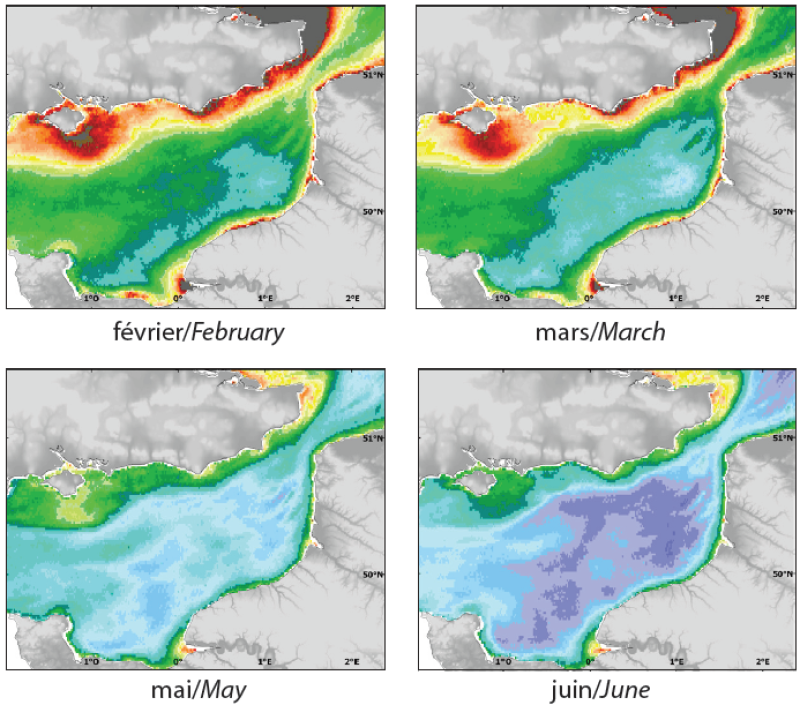
mineral Suspended Particulate Matter (g.m-3)
-
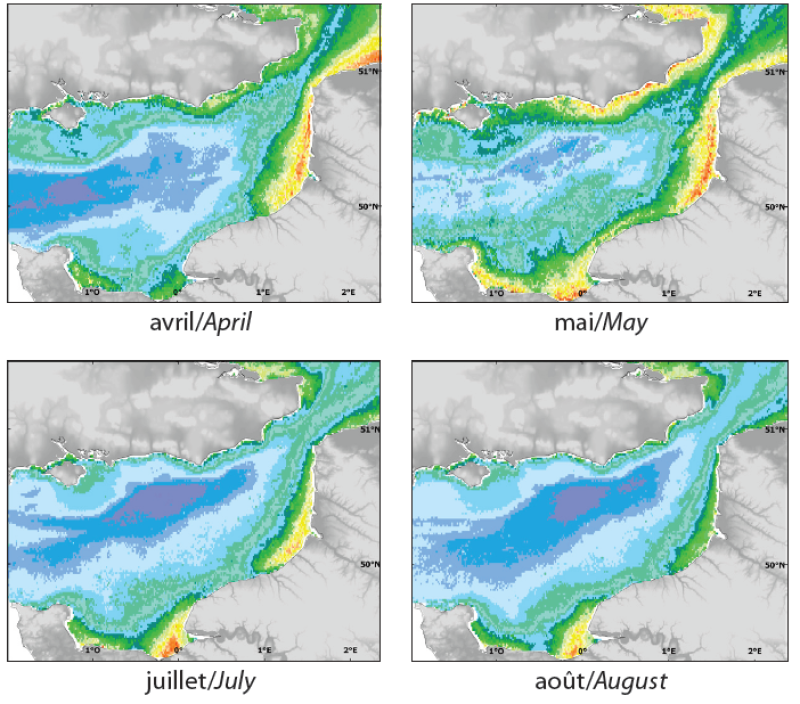
chlorophyll a concentration (in g.m-3)
-
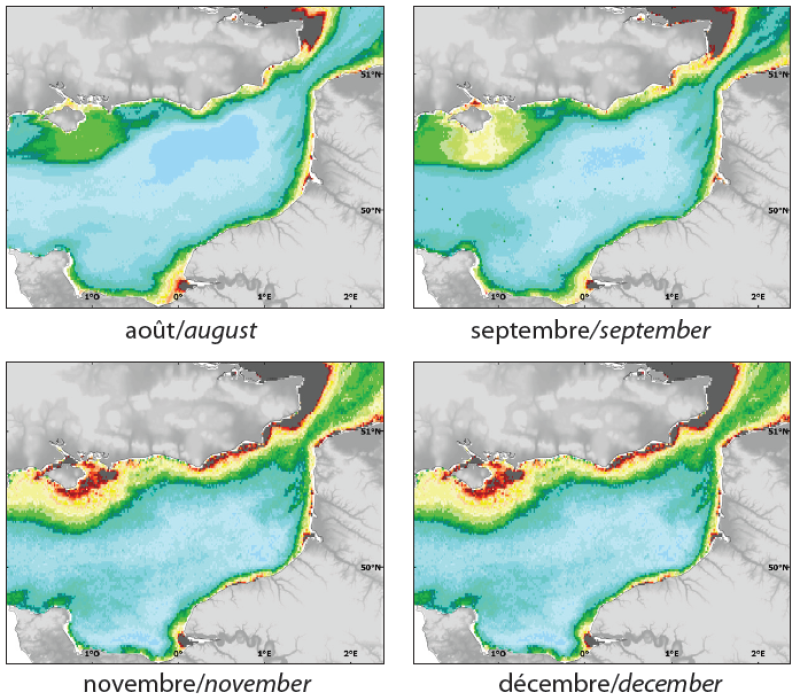
attenuation coefficient (KPAR, m-1)
-
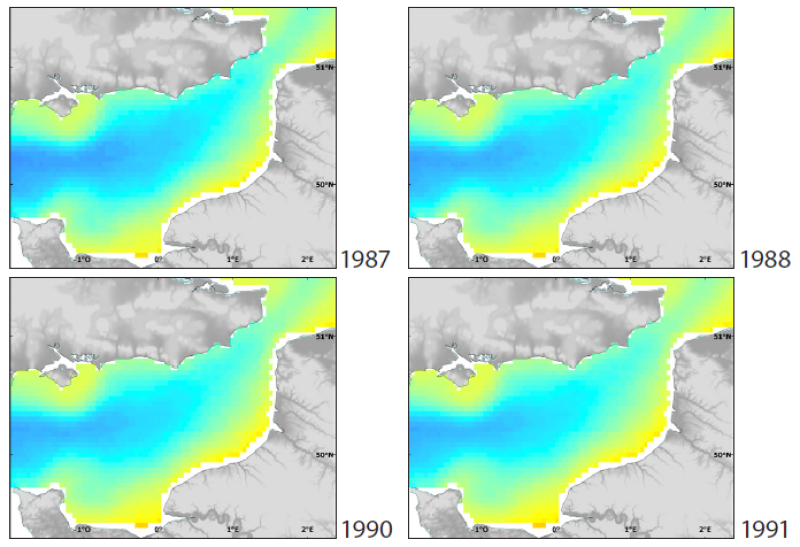
The English Channel is a biogeographical transition zone, situated between warm temperate and boreal marine province. This status enables the early detection of trends in the oceanic climate regime between two provinces. Mean SST maps for February (coldest month of the year) and August (warmest month of the year), from 1986 to 2006, were produced.
-
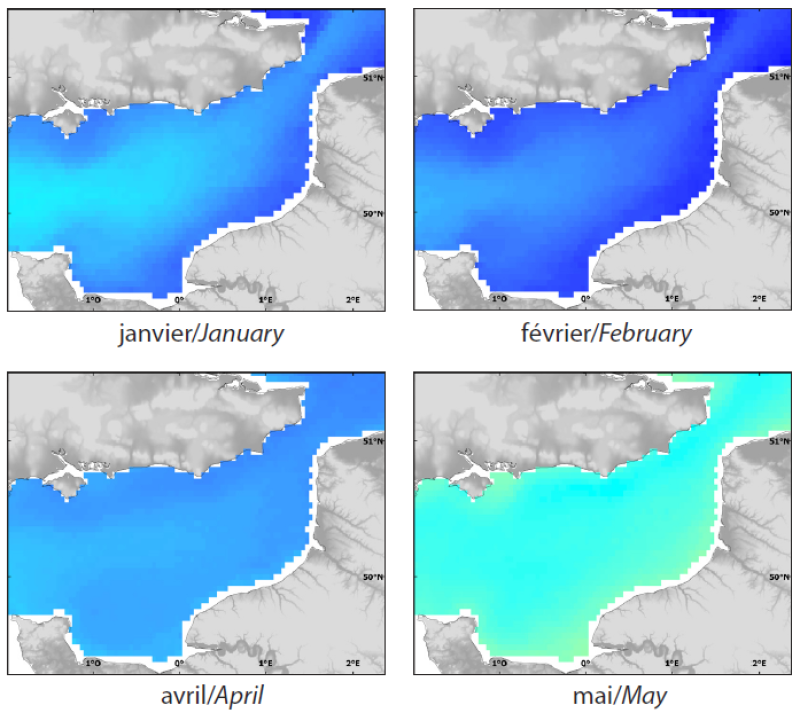
Sea Surface Temperature (SST, in °C)
-
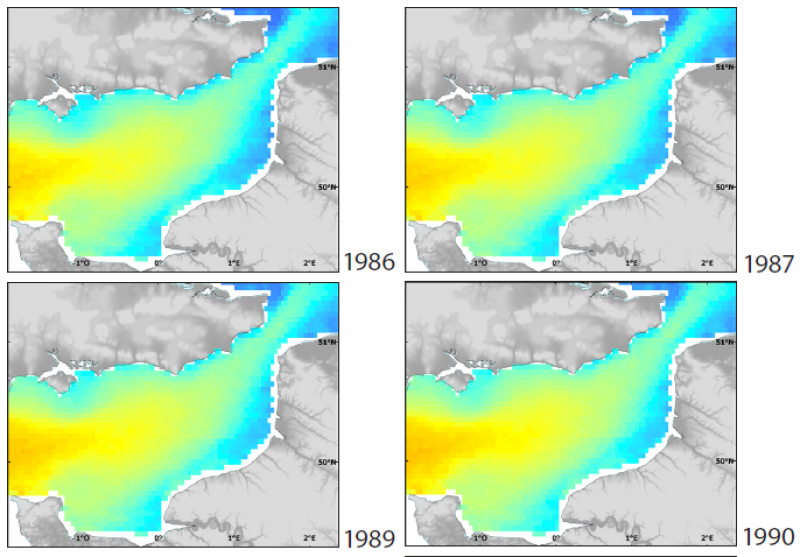
The English Channel is a biogeographical transition zone, situated between warm temperate and boreal marine province. This status enables the early detection of trends in the oceanic climate regime between two provinces. Mean SST maps for February (coldest month of the year) and August (warmest month of the year), from 1986 to 2006, were produced.
-
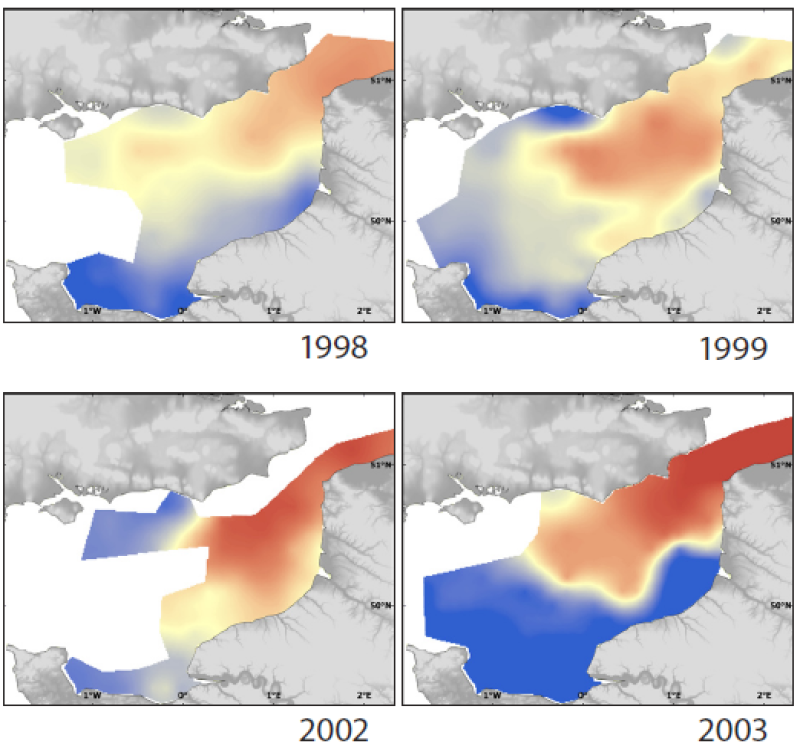
Temperature and salinity were measured in situ at sea surface and at bottom during the CGFS surveys from 1997 to 2006. Temperature and salinity were measured using a probe. These surveys give illustration of autumn conditions.
-
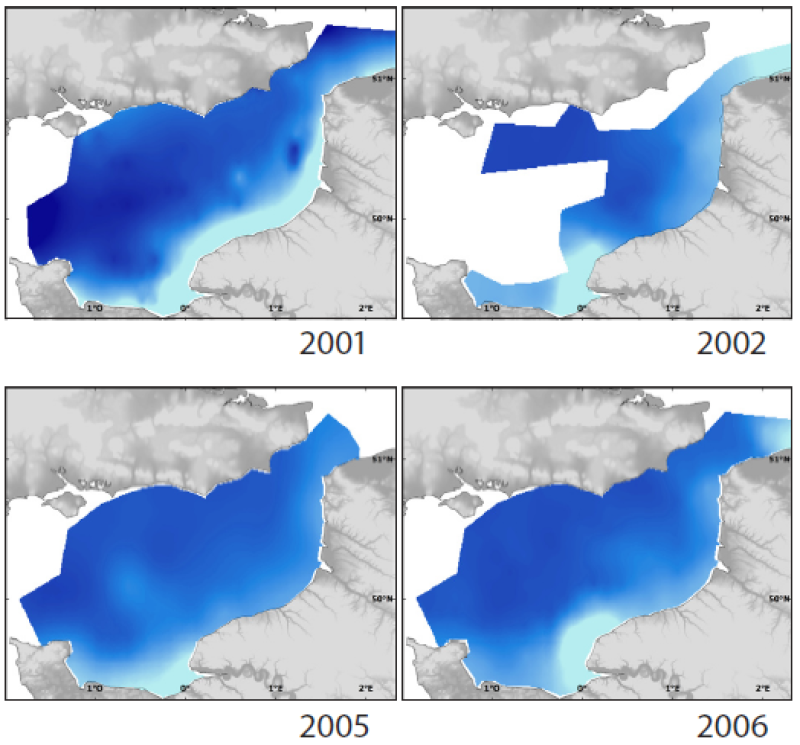
Temperature and salinity were measured in situ at sea surface and at bottom during the CGFS surveys from 1997 to 2006. Temperature and salinity were measured using a probe. These surveys give illustration of autumn conditions.
-
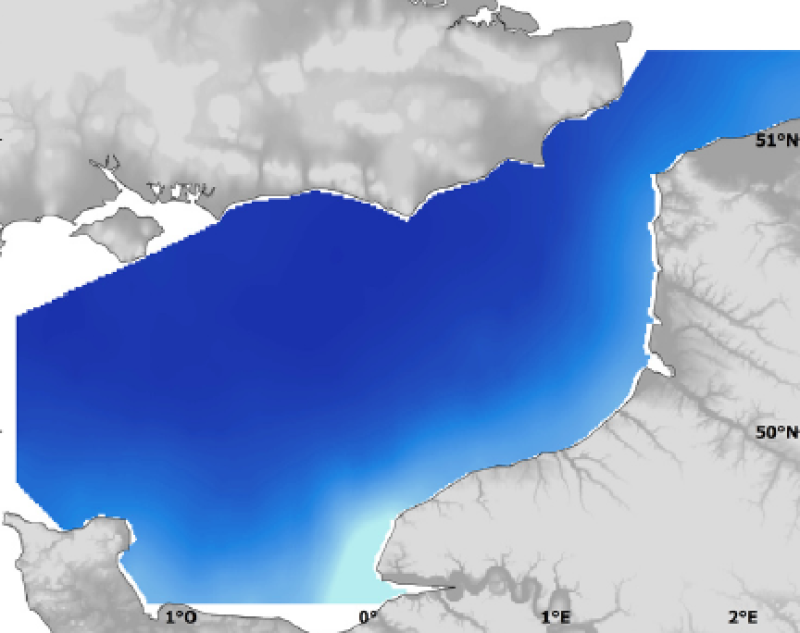
Temperature and salinity were measured in situ at sea surface and at bottom during the CGFS surveys from 1997 to 2006. Temperature and salinity were measured using a probe. These surveys give illustration of autumn conditions. Average, standard deviation and interpolation error of yearly maps were produced
-
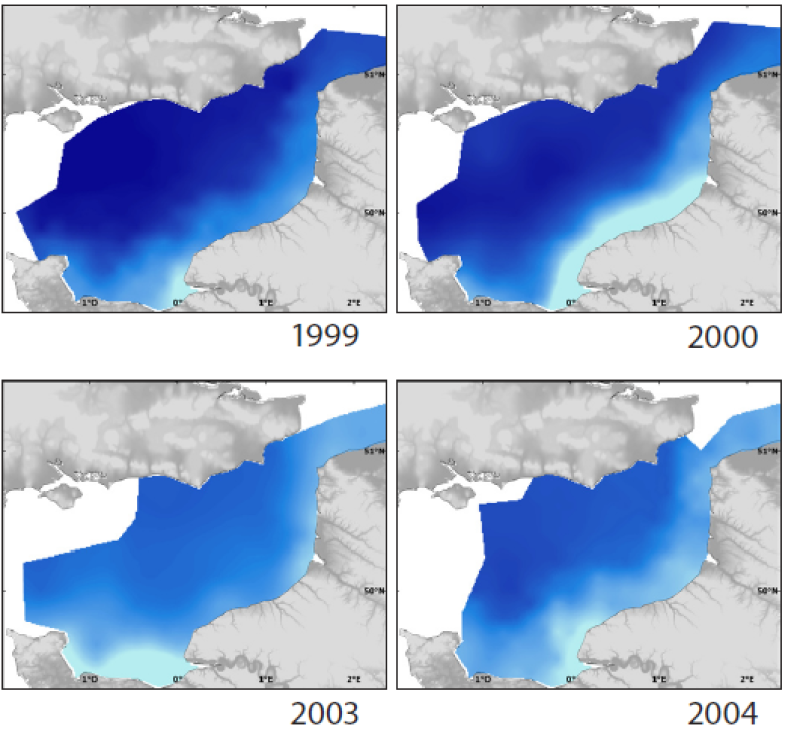
Temperature and salinity were measured in situ at sea surface and at bottom during the CGFS surveys from 1997 to 2006. Temperature and salinity were measured using a probe. These surveys give illustration of autumn conditions.
 Mon GéoSource
Mon GéoSource